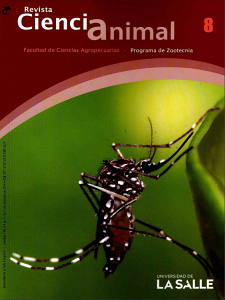Abstract
The chikungunya virus (CHIKV) belongs to the family of arboviruses; it is an emerging disease in Asia and Africa, where it has shown interepidemic periods between 4 and 30 years, approximately. In America and the Caribbean, it was not known until 2006-2010, when it first appeared in French territory. In 2013, cases of infection were reported in Martinique and other Caribbean islands, and it became an emerging disease in these areas, which presents an imminent risk for the spread of the virus in South America. The transmission is related to the presence of endemic vectors in the potential region, where presence of arthropods is evidenced, such as Aedes aegypti and Ae. albopictus, species related to the transmission of dengue. This disease is called chikungunya fever or epidemic arthritis, and it generates an emergency situation for the continent, especially in tropical and subtropical areas where these mosquitoes are present. The aim of this paper is to inform the community and the professionals of the agricultural sector on its epidemiology and impact on public health.Downloads
Download data is not yet available.



